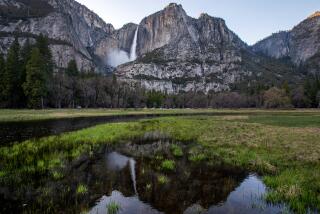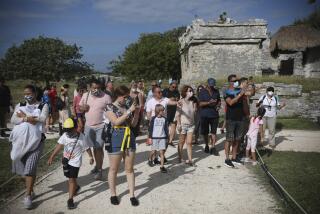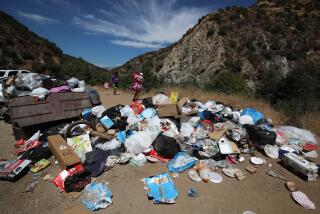Historic site at risk; too many tourists
Calls are mounting for limiting visitors to the fragile Inca citadel of Machu Picchu, an increasingly popular tourist destination.
Some have suggested closing South America’s preeminent archeological monument one or two days a week as the number of annual visitors soars toward 1 million — more than a tenfold increase since the early 1990s.
“We all know that Machu Picchu is in danger, that it can’t take many more people and we could lose it,” said Patricio Valderrama, a geologist with Peru’s Geologic Institute of Mining and Metallurgy. “We have to think about what is needed to be done to save it.”
U.N. officials have also voiced concern about the ancient complex, which is listed as a World Heritage Site by the U.N. Educational, Scientific and Cultural Organization.
No decision to limit access has been made, and the issue is extremely sensitive in a nation where tourism is a booming business. Peruvian President Alan García recently referred to fears about Machu Picchu’s imminent demise as “alarmist.”
The return of political stability to Peru and Machu Picchu’s haunting splendor and mystical aura have generated a virtual stampede to the “lost city,” which Hiram Bingham, a Yale University academic and explorer, stumbled across in 1911.
The sanctuary was likely abandoned about the time of the Spaniards’ arrival in Peru, experts say. Vegetation reclaimed the Inca haven until its revival as a must-see spot in the 20th century.
All visitors, about 2,000 a day, arrive by train or on foot. Conservationists worry about a possible new road could increase access, attract even more sightseers and heighten the “Disneyland” effect, as one expert put it.
The current onslaught is contributing to destabilization of the structures. Separating tones and water damage are clearly visible at the misty site, nestled at 8,000 feet between the jungle lowlands and the heights of Cuzco. Landslides and fires are threats. Maintenance teams struggle to make repairs. In 2000, a crew filming a beer commercial damaged the iconic Intiwatana, a ceremonial stone. And the Inca Trail, a 30-mile path to the ruins, has suffered from litter, muggings and crowding. A section is now closed every February.
More to Read
Sign up for The Wild
We’ll help you find the best places to hike, bike and run, as well as the perfect silent spots for meditation and yoga.
You may occasionally receive promotional content from the Los Angeles Times.






